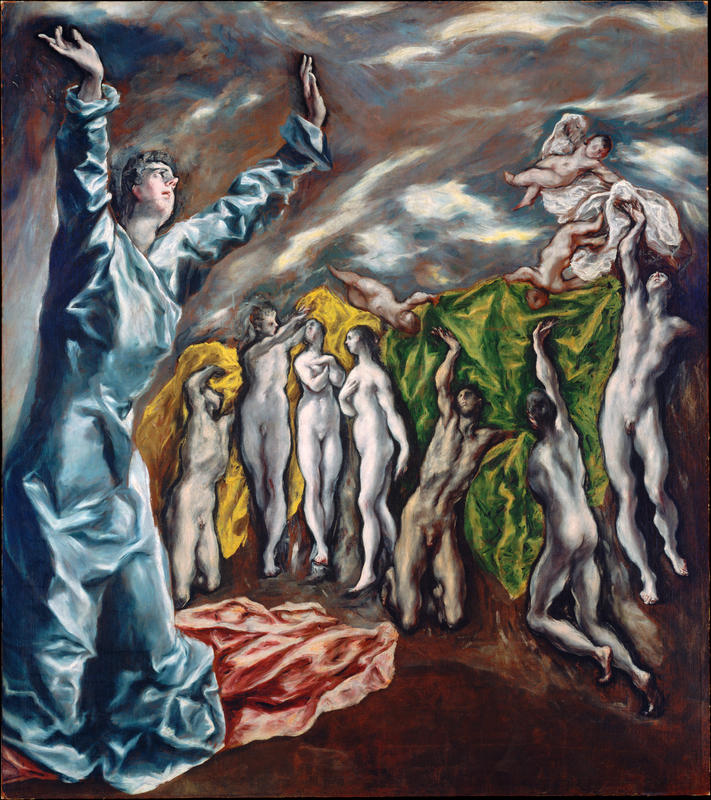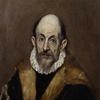More about The Vision of Saint John

Sr. Contributor
When the Curator-in-Chief of the Metropolitan Museum of Art says that he needs to have a certain painting by El Greco in the museum’s collection, you pretty much have to listen to him.
We have Ted Rousseau to thank for his great ability to spot masterpieces. He’s the reason why the Met has a great many of its collection’s heaviest hitters, including works by artists like El Greco and Tiepolo. He even helped win Diego Velazquez’s Juan de Pareja for the Museum after a dramatic bidding war with other top institutions in both Europe and the United States.
Ted Rousseau acknowledged the inherent genius of The Opening of the Fifth Seal, as many others also did before him. German Expressionists, like Ernst Ludwig Kirchner fiercely admired El Greco. Degas owned one of his paintings. Jackson Pollock saw this painting and had to sketch it. It even served as the basis for Picasso’s arguably most famous painting, Les Demoiselles d’Avignon.
Before it landed a permanent and coveted spot at the Met, the work traveled around a bit. The Met eventually bought it from a Spanish painter named Ignacio Zuloaga, who just had to have it the moment he saw it. Rodin, who was traveling with Zuloaga when he first saw the painting, apparently did not like it. But other than that, El Greco’s influence cannot be understated.
El Greco was a complicated artist who was centuries beyond his own time. He studied in Titian’s Venice workshop before heading to Spain, where the people of Toledo especially loved his work and understood his mystical and avant-garde painting style. He became very popular in this region. He reached such artistic prominence that he adopted a decadent lifestyle, having musicians play for him as he ate his meals.
In 1608, the church of the hospital of Saint John the Baptist commissioned El Greco to paint three massive altarpieces; what we can see in the Met today is just a fraction of one of these altarpieces. Although the current version of this painting is huge – a little more than seven feet by six feet – it was even larger in its original state. During a restoration project at the Prado Museum in the 1880s, some jerk chopped as much as 77 inches off of the painting, most notably from the top of the work.
The mystery of what used to hover in the sky right above Saint John is the work’s most tantalizing aspect. In the painting, El Greco illustrates a particularly overwhelming passage from the Book of Revelations describing the end of times. According to the Bible, the apocalypse will be utterly terrifying. In the sky, a vision of a Sacrificial Lamb will open up seals that release swirling clouds and terrifying beasts. The first four seals lets out the four horses of the apocalypse. The opening of the fifth seal reveals all those who had been persecuted and martyred in the name of Christianity, as it was still an illegal religion during Biblical times. The nude figures receiving robes from small angels in the background represent these martyrs.
Scholars think the top might have shown El Greco’s rendition of the lamb opening the seal. It might have also contained nothing other than more swirly skies. El Greco died in 1621 before he could finish the painting, and, thanks to that Prado restorer, we’ll never know what he could have intended for this portion of the painting.
Sources
- Davies, Penelope J.E., Frima Fox Hofrichter, Joseph Jacobs, Ann M. Roberts, and David L. Simon. Janson’s Basic History of Western Art. 8th edition. Upper Saddle River, NJ: Pearson Education, Inc., 2009.
- Hoving, Thomas. “Truth, Not Art.” Making the Mummies Dance: Inside The Metropolitan Museum of Art. Simon & Schuster: New York, 1993.
- Rousseau, Theodore. Theodore Rousseau: Selections from His Writings (New York: Metropolitan Museum of Art, 1979).
- The Metropolitan Museum of Art. “El Greco, The Vision of Saint John.” Collection. https://www.metmuseum.org/art/collection/search/436576. Accessed April 30, 2018.
- Wikipedia. “Seven seals.” https://en.wikipedia.org/wiki/Seven_seals. Accessed April 30, 2018.
Featured Content
Here is what Wikipedia says about Opening of the Fifth Seal
The Opening of the Fifth Seal (or The Fifth Seal of the Apocalypse or The Vision of Saint John) was painted in the last years of El Greco's life for a side-altar of the church of Saint John the Baptist outside the walls of Toledo. Before 1908, El Greco's painting had been referred to as Profane Love. The scholar Manuel B. Cossio had doubts about the title and suggested the Opening of the Fifth Seal. The Metropolitan Museum, where the painting is kept, comments: "the picture is unfinished and much damaged and abraded."
Check out the full Wikipedia article about Opening of the Fifth Seal












